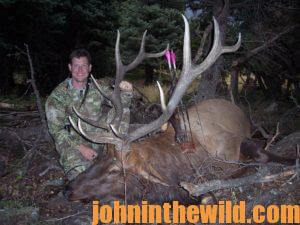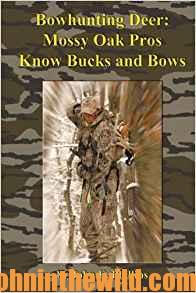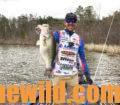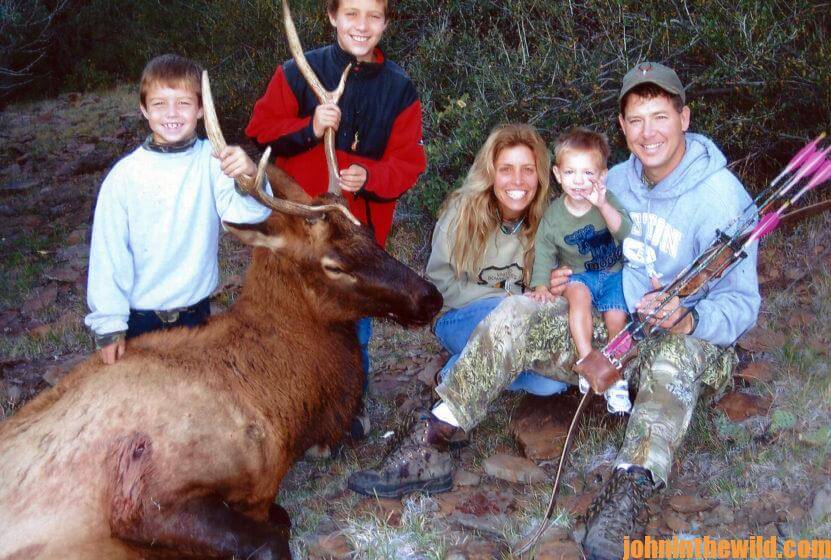Editor’s Note: “Because we harvest 45 – 50 elk every year, and I’ve been guiding elk hunters for 27 years, I’ve probably called in over 800 elk that have been taken at our outfitting company, Fulldraw Outfitters (www.fulldrawoutfitters.com),” Fred Eichler of Aguilar, Colorado, explains. To learn more about Eichler, go to his Facebook page at https://www.facebook.com/pg/fredeichlerpage/.
I can’t remember a time I didn’t shoot a bow. I took my first deer with a bow when I was a teenager. I helped design the Hoyt Satori (https://hoyt.com/recurve-bows/) – a recurve bow that has a lot of adjustability that’s similar in design to the Olympic bows. You can adjust the tiller (https://www.youtube.com/watch?v=ts6DRt5QaCQ), allowing the shooter to tiller the bow to his or her individual shooting style. It also has a true center shot that’s adjustable. Since it’s a takedown bow, you can use lighter limbs or heavier limbs. Although it’s a recurve, you can adjust the poundage by about 5%. When I’m asked why I still hunt with a recurve bow instead of one of the newer-design compound bows, I answer that I believe the recurve bow is a much-more-efficient hunting bow than the compound bow. First of all, you can shoot faster with a recurve bow, and you don’t have to have as many aids to help you shoot accurately as are necessary to shoot with a compound bow.
(https://www.youtube.com/watch?v=ts6DRt5QaCQ), allowing the shooter to tiller the bow to his or her individual shooting style. It also has a true center shot that’s adjustable. Since it’s a takedown bow, you can use lighter limbs or heavier limbs. Although it’s a recurve, you can adjust the poundage by about 5%. When I’m asked why I still hunt with a recurve bow instead of one of the newer-design compound bows, I answer that I believe the recurve bow is a much-more-efficient hunting bow than the compound bow. First of all, you can shoot faster with a recurve bow, and you don’t have to have as many aids to help you shoot accurately as are necessary to shoot with a compound bow.
I was shooting archery with a fellow one time, and he asked me, “Fred, why are you still shooting a recurve bow? Is it the challenge of shooting a bow with no sides?” I told him, “No, it’s not the challenge. I just know it’s a much-more-efficient hunting bow than a compound. His next question was, “Why do you feel that way?” At that time, the average distance that every white-tailed deer that was listed in the Pope and Young record book (https://pope-young.org/records/) was taken at 22 yards. I think today that same statistic is 26 yards. I explained, “I’d rather show you than tell you. Let’s set-up a life-size target at 22 yards and see which bow is more efficient.” When I asked him how he hunted from his tree stand, my friend explained, “I either sit on a seat or a stand, and I have my bow hanging on a bow hanger.” I answered, that that was the same way I hunted in a tree stand. I suggested we start with our bows in our hands, as if we’d just seen a deer but not hook-up our releases because we wouldn’t have our releases set-up if we just took our bows off our bow hangers. Then I asked that he say, “Go,” and we’d see who could shoot that target the fastest. I also mentioned we’d consider the 8th ring on the target the kill zone, because that would be a lung shot on a live deer.
 My friend answered, “Okay,” and then he said, “Go.” I shot the deer in the 8th ring once, stepped back, shot the deer in the 8th ring again, and drew back. Just as I let go the third arrow, my friend just had released his first arrow. My friend looked back at me and said, “I understand now.” Don’t get me wrong. There are certain occasions when the compound bow is a better bow to harvest a deer with than a recurve bow, however in my opinion, there are more occasions when the recurve bow is more appropriate to bag a whitetail than with the compound bow.
My friend answered, “Okay,” and then he said, “Go.” I shot the deer in the 8th ring once, stepped back, shot the deer in the 8th ring again, and drew back. Just as I let go the third arrow, my friend just had released his first arrow. My friend looked back at me and said, “I understand now.” Don’t get me wrong. There are certain occasions when the compound bow is a better bow to harvest a deer with than a recurve bow, however in my opinion, there are more occasions when the recurve bow is more appropriate to bag a whitetail than with the compound bow.
The recurve bow is a much-simpler weapon than the compound bow. My compound bow, including my bow, my sights, my quiver and 36 Allen screws had to be maintained. That’s more things that can go wrong on my compound bow than on my recurve bow. When I’m hunting with a compound bow, I need to have a mechanical release and a ranger finder. With my recurve, I shoot instinctively when I see a deer, and I don’t have to hook-up a mechanical release and range the distance. All I have to do is draw and shoot. I learned to shoot instinctively when I first started to shoot the bow. I still believe that that’s the quickest and most-accurate way to aim and shoot quickly.
To shoot the compound bow accurately, you have to know the distance you are from the animal you’re trying to shoot. If you don’t accurately calculate the distance, you either will miss the  deer or possibly not get a lethal hit. And, when it comes to elk hunting, I’ve taken quite a few elk with compound and recurve bows, but the majority of elk have been taken with the recurve. I’ve been guiding elk hunters for 27 years, and our outfitting group averages our hunters taking 45-50 bulls a year. The majority of our bulls taken with bows are taken from 22 – 25 yards.
deer or possibly not get a lethal hit. And, when it comes to elk hunting, I’ve taken quite a few elk with compound and recurve bows, but the majority of elk have been taken with the recurve. I’ve been guiding elk hunters for 27 years, and our outfitting group averages our hunters taking 45-50 bulls a year. The majority of our bulls taken with bows are taken from 22 – 25 yards.
My set-up is simple. I shoot a Hoyt Satori recurve, and my arrow is an Easton Axis 400 (https://eastonarchery.com/arrows/) with either a Muzzy 3- blade Trocar broadhead (https://www.feradyne.com/muzzy-broadheads/) or the Muzzy Phantom broadhead (https://www.feradyne.com/phantom-4-blade-broadhead-archived/).
 To learn more about bowhunting, check out John E. Phillips’ book, “Bowhunting Deer: Mossy Oak Pros Know Bucks and Bows,” available in Kindle and print versions at http://amzn.to/1QGvdQx.
To learn more about bowhunting, check out John E. Phillips’ book, “Bowhunting Deer: Mossy Oak Pros Know Bucks and Bows,” available in Kindle and print versions at http://amzn.to/1QGvdQx.
Tomorrow: Fred Eichler’s Biggest Bow Bull Buck










